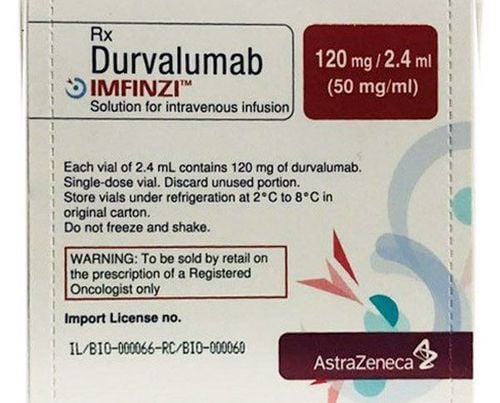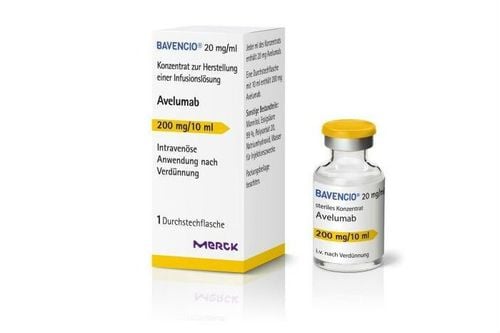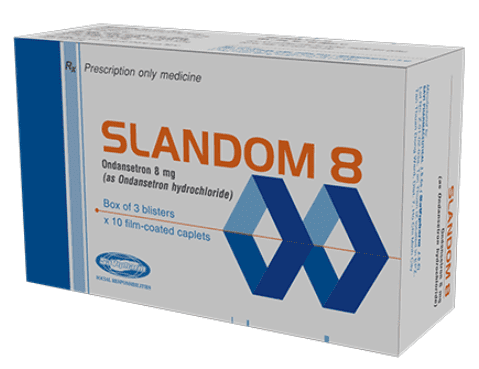This is an automatically translated article.
Cyclophosphamide is often indicated for certain types of cancer and kidney disease in children. Besides the benefits in cancer treatment, Cyclophosphamide has some side effects that users should be especially aware of.
1. What is Cyclophosphamide?
Cyclophosphamide is commonly used to treat certain types of cancer by slowing or stopping the growth of malignant cells and suppressing the immune system's response to certain medical conditions. . Cyclophosphamide is also used to treat certain types of kidney disease in children, after other treatments have not worked.2. How to use Cyclophosphamide
Take Cyclophosphamide by mouth at the dose prescribed by your doctor (usually 1-2 times per day). Your doctor can adjust your prescription based on your health, weight, response to treatment, and balance with other treatments (other chemotherapy drugs, radiation). Tell your doctor about all the medicines you are taking (including prescription, over-the-counter, and herbal products).
During treatment with Cyclophosphamide, you need to drink more water than usual and urinate often to avoid side effects affecting the kidneys and bladder. Ask your doctor about how much water to drink and how often to empty your bladder each day, and follow the instructions carefully.
If you are taking Cyclophosphamide tablets, swallow the tablets whole with a glass of water. Never open, chew or crush the medicine. If you accidentally come into contact with a broken capsule, wash your hands immediately.
Because Cyclophosphamide can be absorbed through the skin and lungs and may harm an unborn baby, women who are pregnant or planning to become pregnant should not take this medicine or be exposed to breathing dust from the tablet. If you vomit after taking the full dose, do not arbitrarily make up the dose, but stick to the normal dosing schedule.
Do not increase your dose or take Cyclophosphamide more often without your doctor's approval. Not only will your condition improve faster, but there will also be an increased risk of serious side effects.
3. Cyclophosphamide side effects
Some side effects of Cyclophosphamide can be:
Anorexia. Stomach pain . Diarrhea. Dark skin or nails. Nausea and vomiting.
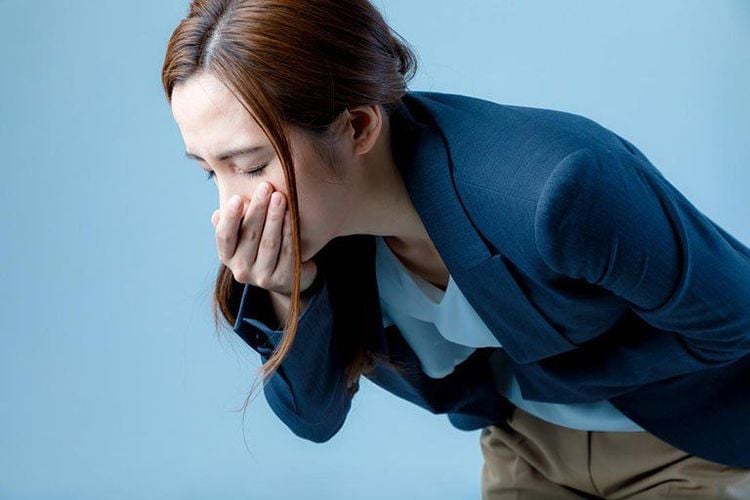
Thuốc Cyclophosphamide có thể gây buồn nôn cho người sử dụng
In some cases, to prevent or reduce severe nausea and vomiting, additional treatment with medication may be considered.
Dietary changes such as eating small meals or limiting activity can help alleviate some of the above effects. If these side effects persist or tend to get worse, tell your doctor right away.
Some people taking the drug may experience temporary hair loss. Hair will grow back after treatment ends or even during treatment.
Tell your doctor if you notice any serious side effects such as:
Signs of kidney or bladder problems (change in the amount of urine, pink/bloody urine). Mouth Sores. Athritis. Stop menstruating. Slow wound healing. Black or bloody stools. Stomach pain. Severe abdominal pain. Yellow eyes, yellow skin. Dark urine. Mood change. Muscle weakness, muscle spasms. Persistent nausea or vomiting. Yellow eyes, yellow skin.
In rare cases, Cyclophosphamide can cause serious cardiovascular effects, especially when used in high doses or when combined with radiation treatment or certain other chemotherapy drugs (such as Doxorubicin). Get medical help immediately if you have:
Chest pain. Jaw pain. Left arm pain. Shortness of breath . Irregular heartbeat. Symptoms of heart failure (such as shortness of breath, swelling of the ankles and feet, unusual tiredness, sudden weight gain). Cyclophosphamide can also decrease the function of bone marrow leading to a decrease in the number of blood cells such as red blood cells, white blood cells, and platelets. This condition can cause anemia, reduce the body's ability to fight infections, or cause easy bruising or bleeding. Tell your doctor if you have any of the following symptoms:
Unusual fatigue. Pale skin. Signs of infection (eg, fever, chills, sore throat that won't go away). Easy bruising and bleeding.
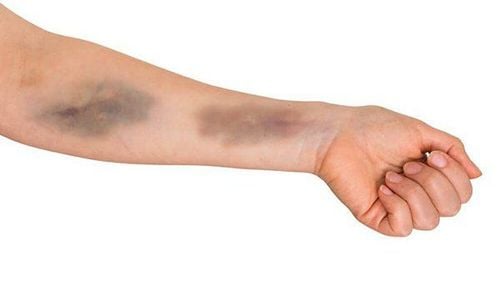
Thuốc Cyclophosphamide có thể gây bầm tím ở môt số ít trường hợp
Cyclophosphamide also reduces the chances of having a baby in both men and women. Infertility is usually temporary while taking this medicine, but can be permanent in some cases.
Although Cyclophosphamide is used to treat cancer, in some patients there may be an increased risk of developing another form of cancer months or years after treatment. Tell your doctor if you see the following symptoms:
Unusual growths or lumps. Swollen lymph nodes. Unexplained or sudden weight loss. Sweating at night. Pain in the pelvis. Pain when urinating. Urinate frequently.
4. How to prevent side effects of Cyclophosphamide
Before taking Cyclophosphamide, tell your doctor if you are allergic to its ingredients or to other chemotherapy drugs (such as Busulfan, Chlorambucil), or if you have any other allergic conditions.
Before taking the drug, the patient should list the medical history to the doctor, especially if he has problems such as: impaired bone marrow function (such as anemia, leukopenia, thrombocytopenia), disease liver disease, kidney disease, difficulty urinating (eg, due to a blockage), surgery to remove the adrenal gland.
Cyclophosphamide may make you more susceptible to infections or may worsen any existing infections. Therefore, wash your hands carefully to prevent the spread of bacteria, and avoid contact with people who have infections that are easily transmitted to others (such as measles, flu, chickenpox).
While taking Cyclophosphamide, do not vaccinate without the consent of your doctor. Also, avoid contact with people who have recently received live vaccines. Children may be more sensitive to the side effects of this medicine, especially later infertility.
This medicine can harm an unborn baby, so if you are pregnant or planning to become pregnant, you should absolutely not take Cyclophosphamide. Use reliable birth control during treatment with Cyclophosphamide and for 1 year after stopping treatment. Men using Cyclophosphamide should use reliable forms of birth control during treatment and for at least 4 months after stopping treatment. If you or your partner becomes pregnant, talk to your doctor right away about the risks and benefits of taking the medication.
Cyclophosphamide passes into breast milk and may harm a nursing infant. Breast-feeding while using this medicine and for 1 week after stopping treatment is not recommended. Consult your doctor before breast-feeding.
5. Cyclophosphamide drug interactions
Some drugs that may interact with Cyclophosphamide include: Allopurinol, Chloramphenicol, Chloroquine, Digoxin, Nalidixic Acid, Phenobarbital, Phenothiazines, Primidone, Turmeric (curcumin).If you miss a dose of Cyclophosphamide, take it as soon as you remember. If it is almost time for your next dose, skip the missed dose and do not take a double dose to catch up. Store the blister pack at room temperature away from heat and moisture. Do not store medicine in the bathroom. Keep all medications away from children and pets.
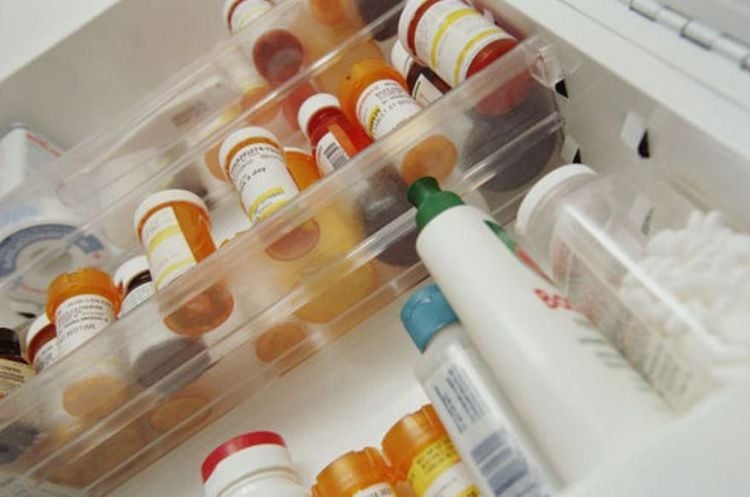
Thuốc Cyclophosphamide cần được bảo quản phù hợp
Before and during the use of Cyclophosphamide, the patient should still have regular medical tests (such as complete blood count, urinalysis) to monitor disease progression or check side effects (if any).
Best to ensure safety, patients should consult a doctor, pharmacist before using the drug. Medications should be taken as directed to get the best results.
Vinmec International General Hospital has a team of doctors, pharmacists with many years of experience in the profession, who will directly support and advise customers when there are any health problems as well as in the future. medication process.
Please dial HOTLINE for more information or register for an appointment HERE. Download MyVinmec app to make appointments faster and to manage your bookings easily.
Reference source: webmd.com




